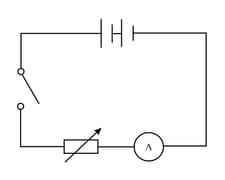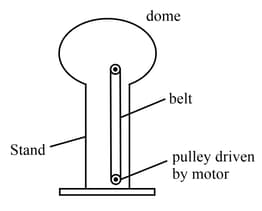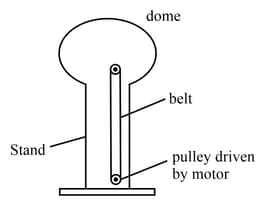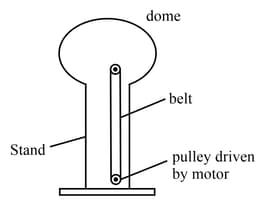Aiden Gill, Heidi Foxford and, Dorothy Warren Solutions for Chapter: Electrostatics and Electric Currents, Exercise 6: Test-style questions
Aiden Gill Science Solutions for Exercise - Aiden Gill, Heidi Foxford and, Dorothy Warren Solutions for Chapter: Electrostatics and Electric Currents, Exercise 6: Test-style questions
Attempt the practice questions on Chapter 9: Electrostatics and Electric Currents, Exercise 6: Test-style questions with hints and solutions to strengthen your understanding. Cambridge Lower Secondary Science Stage 9: Workbook solutions are prepared by Experienced Embibe Experts.
Questions from Aiden Gill, Heidi Foxford and, Dorothy Warren Solutions for Chapter: Electrostatics and Electric Currents, Exercise 6: Test-style questions with Hints & Solutions
Angelique investigates the current in a circuit, and how it changes when the length of a resistance wire is changed. Look at the circuit diagram. The symbol for the variable resistor represents the resistance wire.

Look at the table of Angelique's results.
| Length of resistance wire in cm | current in A |
Which, if any, lengths of resistance wire should Angelique test again? Explain your answer.
Draw the circuits for the following investigations or uses.
Two lamps in parallel with a cell and one switch that controls both lamps.
Draw the circuits for the following investigations or uses. Three cells in series with a resistor and a switch.
Explain how a cloth can be used with an insulator to demonstrate the movement of electrostatic charge.
Explain why we need to use an insulator in part to demonstrate the movement of electrostatic charge, not a conductor.
The diagram shows a Van de Graff generator.

Which part of the Van de Graaff generator works like a rubbing cloth?
The diagram shows a Van de Graff generator.

What type of charge builds up on the dome when the Van de Graaff generator
The diagram shows a Van de Graff generator.

When someone standing on an insulator touches an uncharged dome and waits while the dome is charged up, their hair stands up on end. Describe and explain what is happening with the electric charges.
